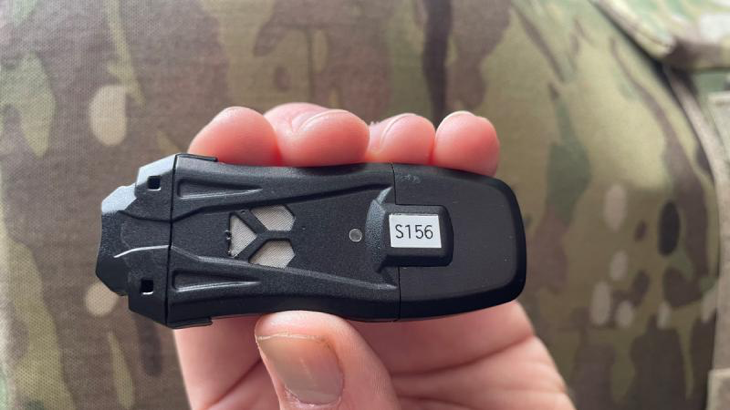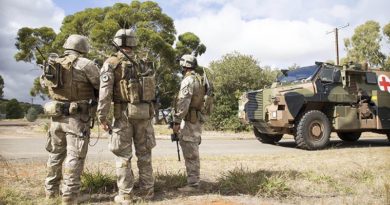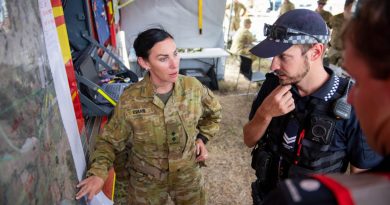Defence capability put to new use

A thumb-sized device made by Defence for chemical detection has found a new purpose.
CAPTION: Defence Science and Technology Group’s MIST sensor, used for chemical detection on the battlefield. Story by Emma Thompson.
The first iteration of the sensor, made by the Chemical Detection Branch in the Defence Science and Technology Group (DSTG) in partnership with Ideation Product Solutions, was for laboratory-based tests.
It has since been further developed to be a very low size, weight and power technology that’s potentially deployable for early warning of chemical threats in the battlefield.
The sensor is low-cost and easy to use – it doesn’t require any buttons to work.
Through a formal memorandum of understanding (MOU), the Federal Department of Agriculture, Fisheries and Forestry (DAFF) has partnered with DSTG to test if the sensor could also be used during biosecurity inspections.
DAFF hopes to upgrade their early warning detection technology and find a device with better detection specificity for target fumigants.
Their current system runs on ageing technology, has high maintenance costs and can be a burden on biosecurity officers.
DSTG Project Lead Nicholas FitzGerald said the MOU was a great first step towards establishing a strategic inter-department relationship with DAFF, and may serve as an exemplar for other inter-department relationships.
“Capitalising on these sorts of opportunities and showing clear value could also be an important step toward a future of multi-departmental research centres where member departments contribute to them and draw from them according to their means and needs,” Dr FitzGerald said.
“Strategic partnering in areas of overlapping departmental capability just makes sense.”
DAFF Director of Research and Innovation, Biosecurity Strategy and Reform Division, Jessica May, sais it has been exciting to work with Defence on implementing the sensor.
“I now better understand why chemical, biological, radiological and nuclear threats are so important in a conflict environment,” she said.
“I also understand how the technology used to meet these threats can be applied to our work within or around hazardous environments.”
A proof-of-concept pilot test with current technology took place between the organisations earlier this year, with further testing planned.
DSTG, through the Operating in CBRN Environments STaR Shot, are also actively exploring other dual-use opportunities for the technology.
.
.

.
.





